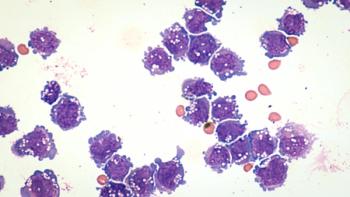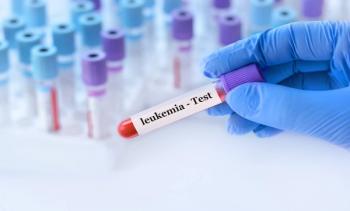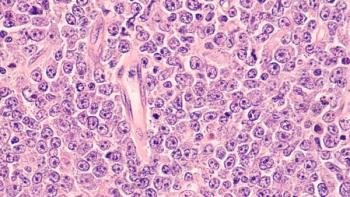
Similar burdens were observed among both children with a diagnosis of type 1 diabetes (T1D) and their informal caregivers, both at the time of diagnosis and when the disease was already established.

Similar burdens were observed among both children with a diagnosis of type 1 diabetes (T1D) and their informal caregivers, both at the time of diagnosis and when the disease was already established.

Treatment with R-GemOx was associated with significant health care resource utilization, high costs surrounding treatment, and low overall survival in elderly patients with diffuse large B-cell lymphoma (DLBCL).

Studies of DNA methylation, RNA methylation, and histone modification revealed important information about the pathology of chronic lymphocytic leukemia and treatment potential.

Individual variations in cognitive performance based on fluctuating glucose levels were observed, necessitating further research on the topic.

Clinician and patient interviews indicated satisfaction with the items presented to help describe patient symptoms with different lymphomas.

A case report of a patient with acute leukemia who developed chronic disseminated candidiasis revealed difficulties in diagnosing and treating the illness.

Analysis of single-agent, combination, and novel bispecific antibodies revealed a positive landscape of treatment for patients with diffuse large B-cell lymphoma (DLBCL).

Advances in multi-omics have led to large scale studies that can provide a better prediction method for adequate therapy choices in patients with chronic lymphocytic leukemia (CLL).

This new analysis provides an optimistic outlook on the future of chronic lymphocytic leukemia (CLL) treatment and discoveries into the background behind CLL transformation into Richter syndrome.

Venetoclax and azacitidine was found safe, but further randomized trials are needed to determine the full extent of the combination’s efficacy in myelodysplastic syndromes (MDS) and acute myeloid leukemia (AML).

Investigators used a predictive model factoring in lymphopenia, elevated SIL2R level, extranodal involvement, and a positive hepatitis panel to determine risk for febrile neutropenia among patients with diffuse large B-cell lymphoma (DLBCL).

Developing accurate predictive models for patients with pediatric acute myeloid leukemia (AML) can close the preclinical gap in treatment for the rare disease.

The pump had varying success in reaching recommended glycemic targets among the study participants with type 1 diabetes (T1D).

In younger patients with chronic lymphocytic leukemia (CLL), treatment with ibrutinib plus fludarabine, cyclophosphamide, and rituximab (iFRC) led to strong progression-free survival (PFS) and durable remission years after treatment.

After being found effective over longer durations with smaller doses, this study found that nipocalimab infusions resulted in a tolerable safety profile and remained effective even in shorter treatment periods and with larger doses.

Investigators are optimistic about bispecific antibodies (BsAbs) for patients with diffuse large B-cell lymphoma (DLBCL), especially the possibility of combining different BsAbs with distinct targets for stronger treatment outcomes.

Despite the widespread practice of delaying or modifying chemotherapy treatment for patients with COVID-19, the investigators wrote that there are no clear data indicating the benefit of this practice.

Numerous strategies were proposed, including an emphasis on community-based interventions that can reduce psychological stressors associated with clinical settings.

The study was the first of its kind to analyze social deprivation among CLL patients and observe the underlying reasons behind their clinical outcomes.

For the first time, investigators found that the replacement of salt with a salt substitute not only reduced hypertension, but did not also increase hypotension, a key factor for older adults.

Circumstantial and direct evidence, including a review of twin and backtracking studies, demonstrate potential prenatal development of acute childhood leukemias.

Investigators observed an increase in the prevalence of Alzheimer disease in patients with diagnosed myasthenia gravis (MG), which indicates that MG is an independent risk factor for AD.

Efficacy against chronic lymphocytic leukemia (CLL) was seen when tested as both a single agent and in combination with antitumor antibody.

Patients with comorbid acute myeloid leukemia (AML) and myelodysplastic syndrome (MDS) expressed a desire to discuss treatment options and maintain normalcy; they were not willing to have conversations involving their prognosis and future.

Thousands more people filled their insulin prescriptions following the introduction of the cap in January 2023, especially compared to those who were not enrolled in Medicare, a new study finds.

A new model produces information that can lead to individual providers identifying women who may need more targeted and more frequent HIV testing or be good candidates for preexposure prophylaxis.

259 Prospect Plains Rd, Bldg H
Cranbury, NJ 08512
© 2025 MJH Life Sciences®
All rights reserved.
